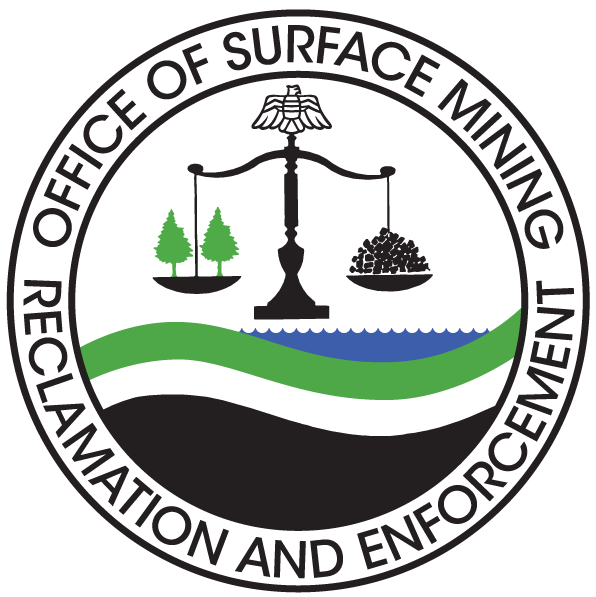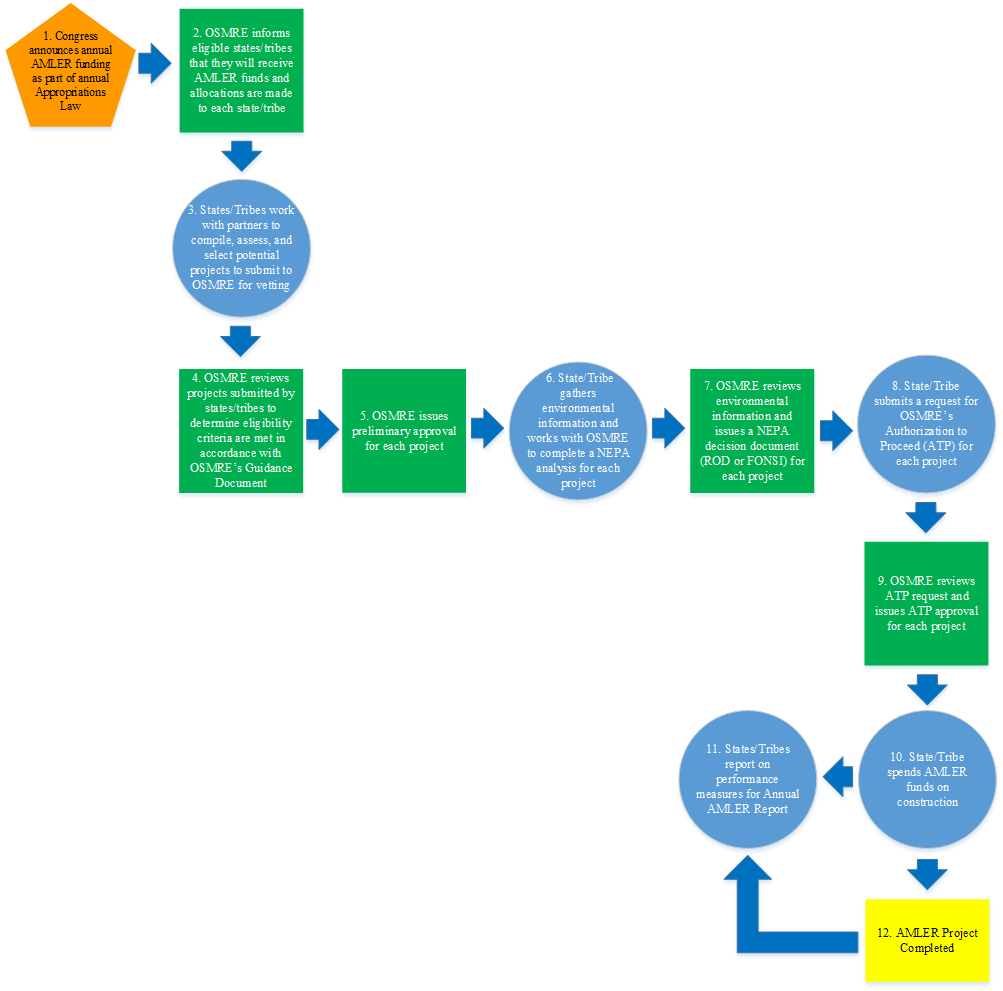Abandoned Mine Land Economic Revitalization (AMLER) Program
Congress has appropriated funding for the Abandoned Mine Land Economic Revitalization (AMLER) Program (previously known as the AML Pilot Program) on an annual basis since Fiscal Year (FY) 2016. The intent of the program is to explore and implement strategies that return legacy coal mining sites to productive uses through economic and community development. The AMLER Program supports local investment opportunities that provide for sustainable long-term rehabilitation of coalfield economies. The Office of Surface Mining Reclamation and Enforcement (OSMRE) administers the AMLER Program and provides eligible states and Tribes with AMLER grants and guidance on project eligibility criteria and reporting requirements.
AMLER Funding
Consistent with the Consolidated Appropriations Act, 2023 (Public Law 117-328), OSMRE has notified eligible states and Tribes that FY 2023 AMLER funding is available. The FY 2023 AMLER Program will provide grants to the six Appalachian states with the highest amount of unfunded Priority 1 and Priority 2 AML sites based on OSMRE AML inventory data as of September 30, 2022 and the three tribes with AML Programs. Kentucky, Pennsylvania, and West Virginia are each allocated $29.347 million; Alabama, Ohio, and Virginia are each allocated $11.739 million; while the Navajo Nation, Hopi Tribe, and Crow Tribe are each allocated $3.913 million.
Appropriated AMLER Funding (Millions of Dollars)
General AMLER Process
Guidance on Project Eligibility
View the Guidance for Project Eligibility Under the Abandoned Mine Land Economic Revitalization Program for FY 2023. This document provides an overview of AMLER and eligibility requirements for AMLER projects. It also includes information regarding real property and reporting requirements that apply to AMLER projects from all fiscal years.
Submission of Project Applications
AMLER project applications are submitted to state/Tribal AML Programs. For more information, see the links below.
| Alabama | Kentucky | Ohio |
| Pennsylvania | Virginia | West Virginia |
| Crow Tribe | Hopi Tribe | Navajo Nation |
Status of the AMLER Program and Projects
Refer to the report on the Abandoned Mine Land Economic Revitalization Program for FY 2016 – FY 2022 for information on the status of the program and specific projects.
Archived Documents
The most recent Guidance Document (FY 2023) and the most recent AMLER Report (FY 2016 - FY 2022) also apply to all previous years of the AMLER Program. However, previous versions of these documents are linked below for historical context.
AMLER Guidance:
- FY 2022 Guidance
- FY 2021 Guidance
- FY 2020 Guidance
- FY 2019 Guidance
- FY 2018 Guidance
- FY 2017 Guidance
- FY 2016 Guidance
AMLER Reports:
Frequently Asked Questions
Yes, reference to the "Abandoned Mine Land Reclamation Economic Development Pilot Program" (AML Pilot Program) changed to the "Abandoned Mine Land Economic Revitalization Program" (AMLER Program) in March 2021 to realign with the language in the appropriation law (P.L. 116-260 - pages 308-309). The AMLER name refers to all years of the program (first funded in FY 2016). For continuity with older documents (e.g. reports and guidance documents prior to FY 2021), reference to AMLER will include context that it is also known as the AML Pilot Program.
Funding is allocated by Congress in the annual appropriations law (e.g. P.L. 117-328 - pages 313). Your state/Tribal AML program will announce when applications can be submitted.
In general, projects that create economic/community development on or adjacent to eligible abandoned mine land (may require reclamation or was previously reclaimed). For specific information and examples, view the Guidance for Project Eligibility Under the Abandoned Mine Land Economic Revitalization Program for FY 2023.


_0.png)
